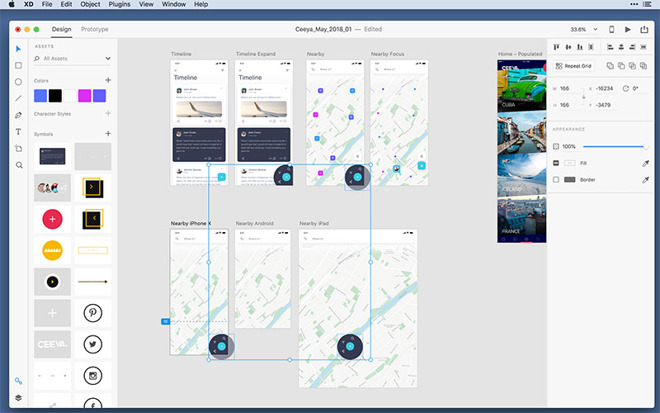

The learning curve is light and occurs mostly around more complex design systems and symbol overrides. The beauty of Adobe XD is that you will feel at home as soon as you start using it.

Most digital designers have used an Adobe application at some point and are familiar with the general interface: tool panel on the left, the main area in the center, layers, etc. However, back in May 2018 Adobe announced a starter plan that allows the use of Adobe XD for free! It’s limited to only one active project but it’s a perfect way to test the waters and try all it has to offer. Unless you already have a subscription, it may be difficult to justify spending so much on trying a new tool. for $50/month, so it’s hard to separate the price specifically for that product. Adobe XD is a part of the Adobe Creative Cloud subscription, which gives you access to over 20 apps like Photoshop, Illustrator, Premiere Pro, etc. One of the factors in the early success of industry favorites like Sketch and Figma was their relative affordability. This is a huge advantage, making Adobe XD very valuable, and potentially the leading UX design tool for the future.īefore we dive into reviewing Adobe XD features, let’s stop and ask, “is it even worth the time to learn a new tool that provides similar functionality to the tools we already know?” To answer that, let’s look at four criteria: price, ease of use, ecosystem, and market share. However, a company like Adobe has the resources to evolve rapidly, as well as the financial stability that would make mastering Adobe XD a good investment. Some may say that an industry giant like Adobe is a dinosaur and not able to be as agile as its younger competitors. Although a little late to the race, Adobe XD has grown in popularity and has become a promising contender since its release in 2016.

Not having the luxury of staying in that position for long… enter Adobe XD. It didn’t move as fast as everyone had hoped, so while Studio seems pretty solid, it’s still somewhat underwhelming and notoriously buggy in spite of the initial hype.Īfter dominating the digital design universe for so long, Adobe is behind in this race for the ultimate UX/UI design tool. Recently, prototyping platform InVision decided to enter the space with its own design tool, InVision Studio. Sketch has been a major player for several years, and Figma, having received financial backing of more than $46 million, is catching up with its web-based interactive prototyping tool. Now it’s a race for design software platforms to attract both beginners and professionals. The days of designers relying on Photoshop as their main design tool are long gone.


 0 kommentar(er)
0 kommentar(er)
